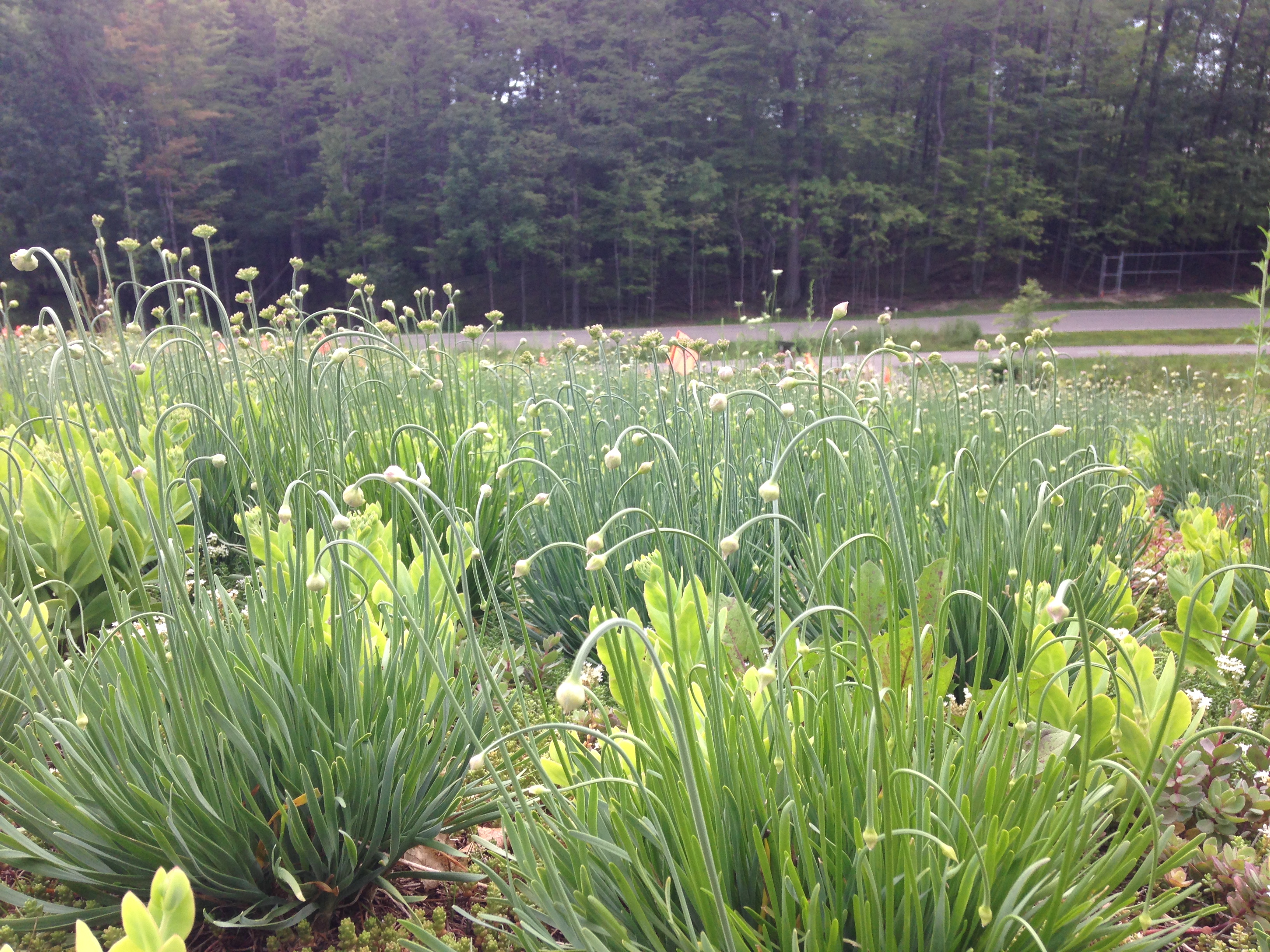Evaluating bioretention cell and green roof performance in northeastern Ohio
Graduate student Laura Sugano will be representing the Watershed Hydrology lab at this year’s Geological Society of America conference in September. Even though this summer has been very dry, Laura has lots of great data to share with conference goers.
Update: Laura will be giving a talk in the Urban Geochemistry session on Wednesday afternoon.
Evaluating Bioretention Cell and Green Roof Performance in Northeastern Ohio
Laura L. Sugano*, Anne J. Jefferson, Lauren E. Kinsman-Costello, Pedro Avellaneda
Kent State University
In urban areas, increased runoff from storm events causes flooding, erosion, ecosystem disturbance, and water quality problems. Green stormwater infrastructure is designed to ameliorate these effects by decreasing the flow rate, overall volume of runoff, and nutrient loads. We compared the effectiveness of a co-located green roof and bioretention cell in order to understand their relative capacities to decrease stormwater runoff and nitrate (NO3-) loads, when subjected to the same weather conditions. Our field site was the Cleveland Metroparks’ Watershed Stewardship Center in Parma, Ohio. Beginning in June 2015, we monitored inflows to and outflows from a bioretention cell draining a paved parking lot and a vegetated roof during 84 storms. Discharge, level, and velocity were measured using an area/-velocity meter at the outflow structure of each site. To assess water quality in water samples, we measured NO3- concentrations using ion chromatography. Event sizes spanned from 0.25 mm to 54 mm. The bioretention cell completely retained flow from 75% of the storm events, and the green roof retained 49% of storms. The bioretention cell completely retained all events smaller than 3.05 mm and the green roof completely retained all events smaller than 0.51 mm. The bioretention cell completely retained 64% of the storm events in summer 2015, 90% in fall 2015, and 77% in winter 2015-2016. The green roof completely retained 37% of the storm events in summer 2015, 48% in fall 2015, and 89% in winter 2015-2016. The groundwater level in the bioretention cell increases in response to storm events and lowers between storms. The soil moisture in the green roof increases during storm events and slowly decreases between storms. NO3- concentration differences between inflows and outflow suggest that more NO3- is removed from inflow to outflow in the bioretention cell than in the green roof. Our study suggests that bioretention cells can decrease stormwater flow and volume and can improve NO3- concentrations better than green roofs because they have the capacity to retain more stormwater and NO3-, due to their thicker substrate and their ground-location, which allows them to retain runoff as well as direct precipitation.

